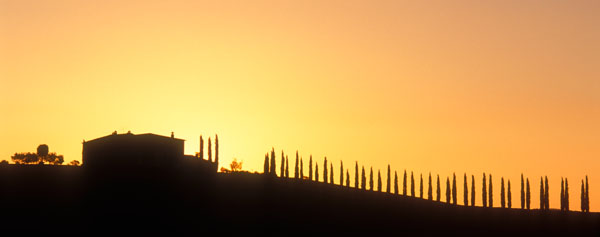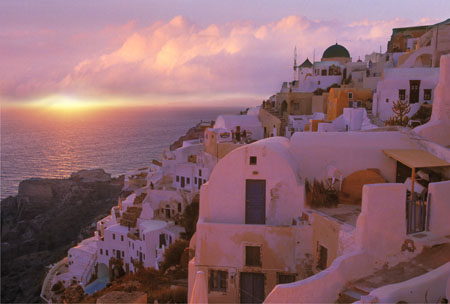When the sun is close to the horizon, and its light travels further through the atmosphere, suspended dust particles scatter rays in every direction and cause diffusion and polarization. The longer wavelengths of light at the red end of the spectrum penetrate further and are consequently the last we see before night descends. Sunrises and sunset can be a magical time for photographers but speed is vital because conditions change very rapidly.

Golden skies make striking additions to travel images, but may be considered clichéd. Certainly they are overused in travel brochures but that is because they successfully convey a relaxed, warm and romantic atmosphere. The inclusion of foreground elements adds framing, depth and interest, and helps to reveal something about the location. It also makes such images less trite, so it is worth looking for a good location well beforehand. Try to find a scene that makes an interesting composition without a coloured sky, and see the sunrise or sunset as a bonus. Strong backlit shapes can be silhouetted against the brightest parts of the sky and used to evoke a particular mood or emotion. Clouds are usually a bonus provided there are sufficient breaks to allow the sunlight through. They add variation and interest and those that are edged with gold may make the picture.
 Exposures for sunrises and sunsets are best taken with the sun excluded from the frame. Measure several areas of brightness around the sun and then lock the exposure before recomposing the image. Alternatively set the appropriate exposure manually. Bracketing in small steps around this basic exposure is the best way to be sure of getting optimum colour saturation.
Exposures for sunrises and sunsets are best taken with the sun excluded from the frame. Measure several areas of brightness around the sun and then lock the exposure before recomposing the image. Alternatively set the appropriate exposure manually. Bracketing in small steps around this basic exposure is the best way to be sure of getting optimum colour saturation.
Flare may be a problem when the disc of the sun is included in the frame. Ensure that your lens is spotlessly clean and remove any filters. Small changes of camera position and angle may remove flare, which reveals itself as smears of colour in the viewfinder. Otherwise look for ways of placing the sun behind an element of foreground composition such as a tree or building.
Remember that interesting skies and colours may be visible before sunrises and after sunsets. Pre-dawn light, and the afterglow that may be seen some minutes after the sun has set, can be more spectacular than the respective events themselves. Also, try turning away from the sun to observe the effects of the warm red light on the scene behind you. This can be more spectacular than the obvious direct view.






